 Narrowsburg
NarrowsburgLight Rain Fog/Mist, 43°
Wind: 8.1 mph
 Narrowsburg
NarrowsburgLong considered the birthplace of fly fishing in America, the Catskills offer dynamic opportunities to discover, rediscover and renew one’s interest in the sport. A unique combination of …
Stay informed about your community and support local independent journalism.
Subscribe to The River Reporter today. click here
This item is available in full to subscribers.
Please log in to continue |
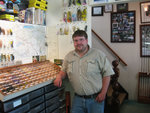

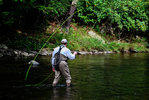

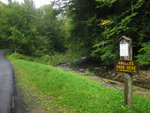
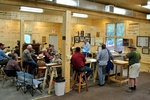
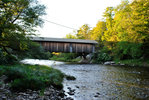
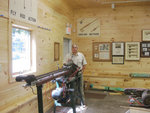
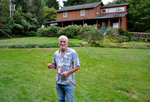
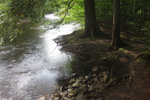
Long considered the birthplace of fly fishing in America, the Catskills offer dynamic opportunities to discover, rediscover and renew one’s interest in the sport. A unique combination of natural resources, proximity to urban areas and history leads to a bounty of hidden treasures, often in plain sight.
Since the 19th century when Theodore Gordon popularized the use of dry flies (artificial flies tied by hand that float on the surface; previously Catskill fishermen had used wet flies fished below the surface) for fishing Catskill streams such as the Willowemoc (aka Willow), Beaverkill, Esopus and Neversink, anglers have revered the area. Theodore Gordon himself wrote of rediscovering the effectiveness of the dry fly after having dabbled with English tied flies when he learned how to fish his own flies on the surface to rising fish and went on to invent the first flies designed to imitate local adult mayflies.
The oldest family-owned fly shop in America is located in Roscoe, NY. Dette Trout Flies, founded by Walt and Winnie Dette in 1928, has a direct lineage to the flies of Theodore Gordon and other innovators of his day. Today it is run by their daughter, Mary Dette and her grandson, Joe Fox. At 27, Joe is the only family member of his or his parents’ generation to take an active interest in the business. He maintains the tradition of his great-grandparents’ classic fly shop, where written files were kept to help fill standing orders for each individual customer’s dry fly preferences. Fox has brought innovation to the flourishing business through online sales of flies and other merchandise while still affording him time to get outdoors to fish 200 days a year.
Joe divides his beloved Willow into three sections: the section from Livingston Manor to the junction with the Beaverkill in Roscoe, the upper Willow from Mongaup Creek to Livingston Manor and the “upper upper Willow,” above Mongaup Creek, where there is lots of public access.
In the fall when the brown trout are spawning and the leaves are turning, Joe recommends an outing the whole family will enjoy—hiking in the public lands of the Willowemoc Wild Forest along the upper upper Willow and its tributaries Mongaup Creek and along spring-fed creeks like the Fir Brook. He also recommends hiking Russell Brook, a Beaverkill trib, in the Cherry Ridge (NY) Wild Forest.
Open season for trout on the upper upper Willow is April 1st through October 15, but the stretch of the upper Willow below the Parkston Bridge and a section of the Beaverkill are open till November 30. A section of the lower Beaverkill below Roscoe and the section of the Willow between Roscoe and Livingston Manor are open to angling all year.
Eight years ago, Evan Lavery bought another long-standing fly shop in Roscoe, The Beaverkill Angler. Founded 40 years ago, the shop features a wide array of equipment, gear, clothing and accessories in addition to flies and tying materials. Evan believes that one of the hidden treasures of the area is “the legitimate two to three months of fall fishing, well into November. While you won’t find the proliferation of hatches like the spring, utilizing a variety of tactics, you’ll find plenty of voracious trout.” At a time when avid anglers are trekking to Montana or upstate to fish for steelhead, there is much less pressure on the streams and you may find yourself alone on an entire run.
Evan advocates using new, or rediscovering old, fishing techniques for fall fishing. “When the fish aren’t feeding on the surface, try contact nymphing, popularized in Europe,” he says. To this end, he is sponsoring the 2013 Troutoberfest on October 12 and 13. In addition to a two-day fly fishing tournament, which Evan believes leads to innovative new techniques and equipment, there are a series of classroom and on-water workshops designed to improve the skills of all levels of fishermen. George Daniel, author of “Dynamic Nymphing,” will lead a class indoors and on-water on contact nymphing. Acclaimed fly tiers from all over will demonstrate their techniques, as will others showing various sub-surface fishing skills. For more information, see beaverkillangler.com/troutoberfest_2013.html.
The Catskill Fly Fishing Center and Museum (CFFCM) located below Livingston Manor on the Willow has been preserving, documenting and sharing the traditions of fly fishing in the Catskills since 1978. Now with three buildings including a gift shop and museum on more than 50 acres, the CFFCM offers something for everyone in the family.
In the new Wulff Gallery and Catskill Rodmakers’ Workshop, the center’s executive director Jim Krull pointed out some of the items from legendary Catskill fly fishers Joan and Lee Wulff’s extensive collection. “Lee invented the fly fishing vest, sewing it himself. We have his second vest, from 1937, on display,” he said. In the workshop below there are extensive collections of rodmakers’ tools, patterns and machines including an original saw beveller constructed by George Halsteadand built sometime in the very late 1920’s to early 30s .
Coming up on October 12 is the Center’s annual Catskill Fly Fishing Hall of Fame induction and dinner. This year the honorees are Rusty Gates (conservationist, fly fisherman, author), Joe Humphries (fly fisherman, conservationist, author and educator), AJ Campbell (tackle collector and writer) and Paul Schmookler (fly tier, author and collector).
At the recent Catskill Rodmakers Gathering at the Center, 165 people from around the world came to learn about new and classic techniques of rod, reel and silk line construction according to Livingston Manor’s Mike Canazon. Mike is an accomplished rodmaker, having been hooked 14 years ago when fishing in Deposit, NY after he borrowed a split bamboo fly rod and “it came alive in my hand.”
He makes about five rods per year, building each piece by hand including the rod, handle, reel seat and hardware. He donates one or two as fundraising items for youth programs and sells the rest to customers who have pre-ordered. As he is building each rod, he thinks about each piece of the puzzle and how it will best serve the needs of the intended customer. “I handle each of the six pieces of split cane hundreds of time and many that are not the right fit for that rod might go into a future rod.”
The Catskills, the birthplace of fly fishing in America is, as Joe Fox says, “a real treasure. The fall is the perfect time to explore and discover the beauty of nature, the diversity of wildlife and the variety of small streams with actively feeding trout.”
Comments
No comments on this item Please log in to comment by clicking here